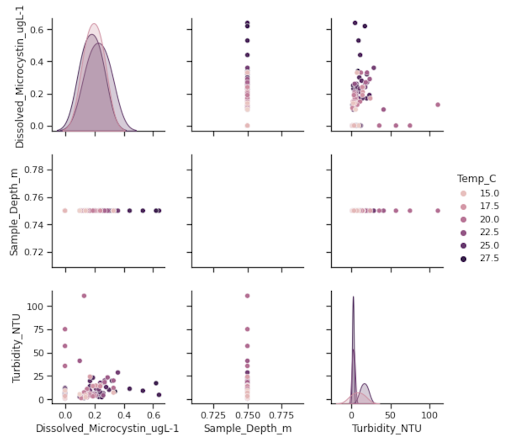Emma Thronson
Motivation:
In my first semester of college, I took Environ 110. My final project for the class was over harmful algal blooms (HABs) found in Lake Erie, and the different particles that promote their growth such as microcystins, which are in turn promoted by chlorophyll and phycocyanin. I was curious to find any correlation between the presence of specific particles and the location within the lake, or qualities of the water, to better predict where HABs may occur in the future. I obtained my data from the National Centers for Environmental Information.
Methods:
So far, I have cleaned up my data set by removing cells in which there was no recorded data and deleting columns that did not seem relevant to the relationships I was hoping to explore. I have also put together some graphs that show the relationship between different columns of data.
Findings:
I’ve found that there is not much of a correlation between the location in the lake and the quantity of the particles that contribute to HABs. I next plan to look closer at the correlation between these particles and other qualities such as temperature of the water, time of year, or turbidity of the water. I also plan to look closer at the data for chlorophyll and phycocyanin as I have mainly been looking at microcystins so far. From the graphs below we can see that multiple levels of microcystins have been found at the same depth, so there is likely little relationship between these two items. We can see that higher concentrations of microcystins are found at lower turbidity levels. Turbidity measures the murkiness of water, so it is surprising to see that microcystins are more highly concentrated when the water has low turbidity. We can also see from the color of the graph points that the quantity of microcystins in a sample is typically higher when the temperature is lower. These are all relationships I would like to explore further.
Data Visualizations:

